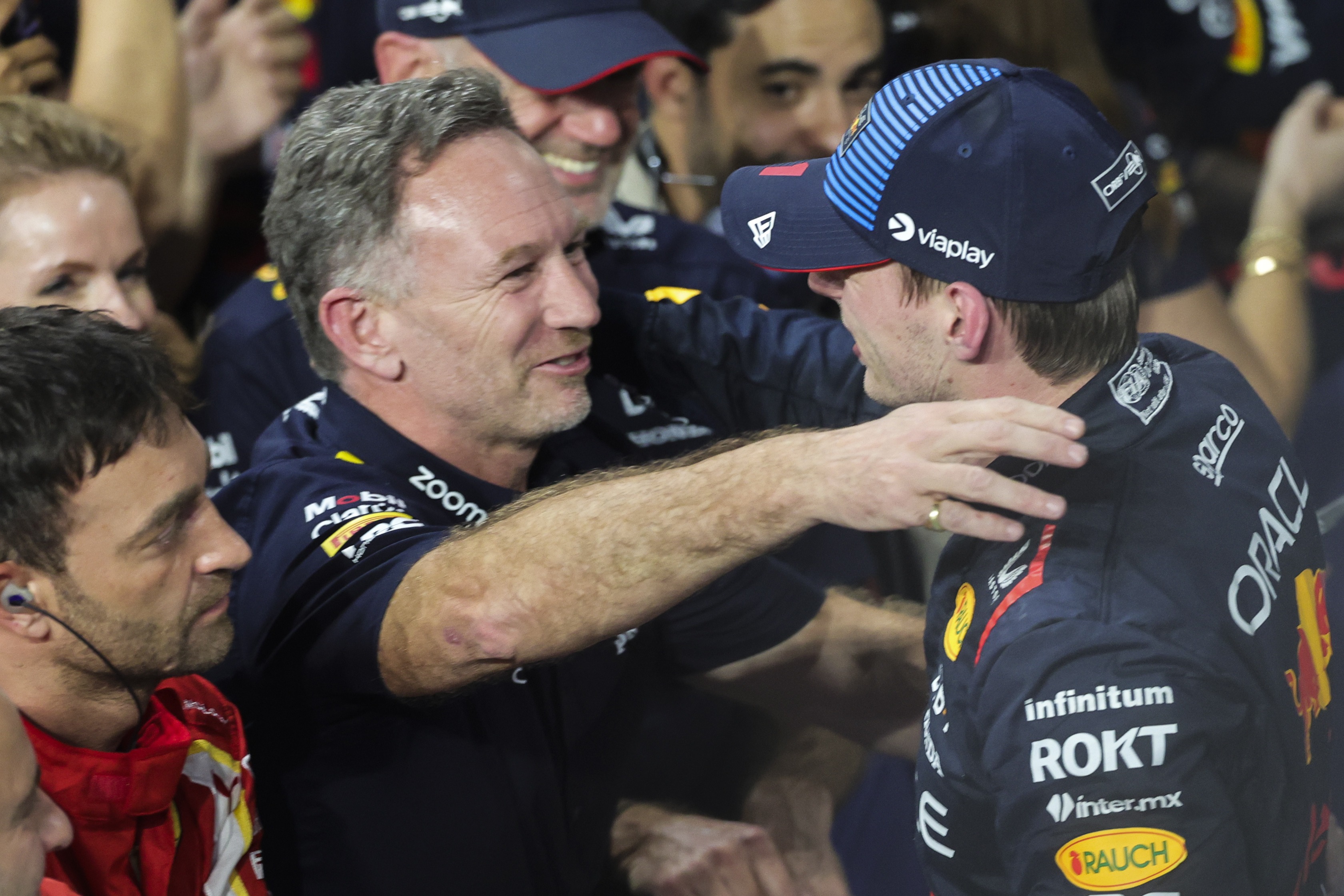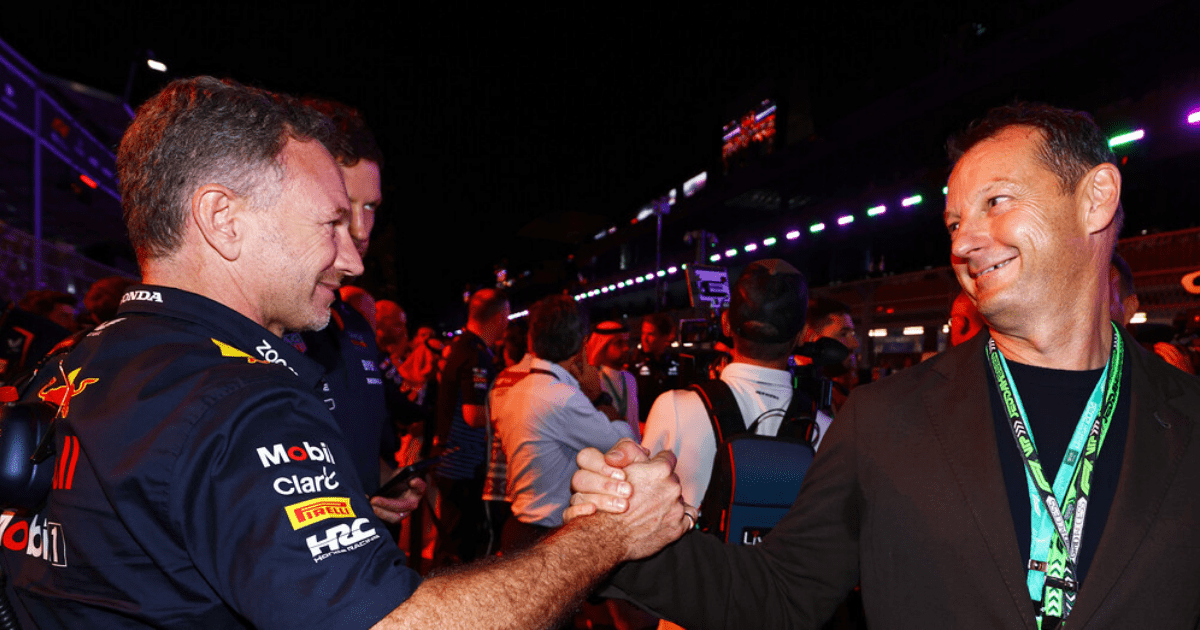Relief and Laughter on the F1 Grid
Christian Horner found solace as he received further support from Red Bull's executives. On the F1 grid, he shared a laugh with Red Bull's CEO Franz Watzlawick, signaling a desire to move on from recent conflicts.
Marko Appeals for Calm
Even Helmut Marko, who had previously aligned with Horner's rival Jos Verstappen, called for calm amidst the tension. The Austrian advisor hinted at suspension before retracting his stance, advocating for peace within the team.
Verstappen's Dominance and Horner's Resilience
Max Verstappen's impressive win at the F1 Saudi Arabian Grand Prix showcased his prowess, leaving executives impressed. Horner's day was further brightened by a successful race, overshadowing recent controversies.
Future Uncertainty and Team Dynamics
Despite the support, questions loom over Verstappen's future with the team amidst internal power struggles. Horner's personal controversies have sparked a complex web of relationships within Red Bull, with key figures Yoovidyah and Mintzlaff aiming to mend divisions.

Public Display of Unity and Ongoing Fallout
Horner and his wife, Geri Halliwell, displayed solidarity at the race, deflecting criticism amid the scandal. However, tensions persist as Verstappen's father and others voice dissent, prolonging the aftermath of the sexting allegations.
Frequently Asked Questions
What are operational costs per Formula 1 season?
Formula 1 teams incur substantial operational costs. These may include travel expenses, logistics, salaries and maintenance. In general, the operational costs of a mid tier team range between $120m and $220m per season. However, leading teams can spend more, up to 400m annually.
What role does sponsorship play in Formula 1 teams finances?
The sponsorships of Formula 1 teams are crucial to their financial health. They provide a vital source of income that helps cover the exorbitant costs of competing. Sponsorships vary from small logo contributions to big title sponsorships, which can be worth millions each year. Teams need these partnerships to stay competitive and maintain their operation.
How much does a Formula 1 steering wheel cost?
A Formula 1 steering is an extremely complex piece of equipment. It contains dials, buttons and displays that control different car functions. The cost of a Formula 1 steering wheel can range from $50,000 to $100,000, reflecting its bespoke design and technology.
How has the introduction of hybrid power units affected Formula 1 team costs?
In Formula 1, the introduction of hybrid engines has led to a greater level of technological complexity, and therefore, increased costs. Development, production, and maintenance of these hybrid engines require significant investment, contributing to the rise in costs for teams since their introduction in 2014. This shift to hybrid technology has necessitated increased budgets for research and development to stay competitive in the hybrid era.
How much is it to build a Formula 1 Car?
The cost of building a Formula 1 car varies significantly. However, teams spend an average of $10 to $15 million per chassis. This can reach $400 million if you include the technology and components.
Can Formula 1 teams acquire cars from rivals?
Formula 1 teams usually design and manufacture their own cars. However, they can buy certain parts from competitors such as power units and transmissions. However, regulations require that specific parts like the chassis and aerodynamic surfaces be proprietary to ensure competitiveness and diversity within the sport.
Statistics
- A Formula 1 team’s pit stop equipment can cost between $100,000 to $500,000 for high precision and speed during the race.
- Wind tunnel testing costs in Formula 1 can be as high as $100,000 per day, which is a critical part of car development.
- The cost of a full-scale Formula 1 simulator can reach several million dollars, with annual maintenance adding to the financial impact.
- Pirelli F1 tires cost around $2,700 each, resulting in a set of four tires costing approximately $10,800.
- Since the introduction of hybrid power units in 2014, Formula 1 teams have seen a significant increase in costs related to engine development and maintenance.
- The operational costs for a Formula 1 team per season can range from $120 million to over $400 million, depending on the team’s size and aspirations.
- Racing suits worn by Formula 1 drivers can cost from $2,000 to $5,000, integrating high levels of safety and performance features.
- Sponsorship deals are critical in Formula 1, with major title sponsorships sometimes contributing tens of millions of dollars to a team’s budget.
External Links
races.ferrari.com
formula1.com
redbull.com
f1technical.net
planetf1.com
racefans.net
beyondtheflag.com
pirelli.com
How To
How To Choose a Formula 1 Racing Seat and Harness Systems
The safety of the Formula 1 driver is paramount when selecting a Formula 1 seat and harness. Design custom-molded seating that is shaped to the driver, providing optimal comfort and support. Work with respected manufacturers. Test the harness systems rigorously to ensure maximum safety against impact forces. Evaluate materials for weight savings without compromising integrity or performance. Collaboration with safety specialists to ensure compliance with latest FIA standards. Incorporate feedback from drivers for further improvements.

